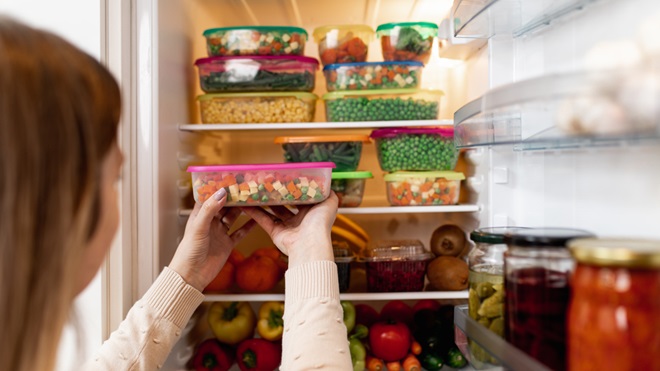Many things can have an impact on how much your fridge is adding to your energy bills. Perhaps you have an older fridge that isn't as efficient as newer models, which are generally cheaper to run and do a better job of keeping your food at optimal temperatures.
Or perhaps your fridge isn't working properly and needs a repair (and you can't afford a new one). Whether you have an old or new fridge, you can maximise your fridge's efficiency by using it sensibly.
If you don't fancy paying through the nose for energy use, these tips will help you make your fridge more energy-efficient and help keep those energy costs down.
1. Set the temperature correctly
Are your fridge and freezer keeping their cool? Check the temperature with a fridge thermometer. For optimal performance, aim for 3°C in the fridge and -18°C in the freezer.
And check it regularly – a fridge with poor response to outside temperature may need adjusting to keep it at the optimal temperatures as the seasons change.
2. Location, location, location
Placement matters. If you have the option, position your fridge in a shady place in the kitchen. A fridge in full sun will have to work harder than one in the shade.
And if you have a second fridge or freezer elsewhere in the house, bear in mind that temperatures in places like the garage tend to fluctuate widely, and will be hotter overall. This means they'll have to work harder to stay cool. Consider moving them to the kitchen if you can.
And if you do have a dedicated drinks fridge in the garage, remember that it's probably costing you the equivalent of two or three slabs of beer a year just to run it. The money you'll save on electricity could be spent on fancy craft beer instead.

A full fridge can be more energy-efficient than an empty one.
3. Keep it stocked
A full fridge is a happy fridge because the thermal mass of its contents helps maintain the temperature (or in other words, the cold stuff helps keep it cold).
In a full fridge, the compressor won't need to cycle on and off as much, which will extend the life of the compressor and reduce running costs. So keep your fridge stocked, while leaving room for air to circulate. But don't overdo it – having to throw away spoiled food will negate any energy efficiency savings, and then some.
4. Don't you open that (fridge) door
Try to minimise how often you open the fridge door. Each time you open the door, the fridge has to work harder to cool down again, which will drive up your electricity costs.
Think ahead when you're making dinner by getting out all your ingredients in one go. And try to discourage teenagers from staring aimlessly in front of the open fridge while deciding what to eat.

Leave leftovers to cool before putting them in the fridge.
5. Let the hot stuff cool down
Putting in a container of piping hot leftovers makes your fridge work harder and use more energy, so let leftovers cool a little on the bench first.
The Food Safety Information Council recommends dividing bulk cooked food into small containers and refrigerating or freezing as soon as it has stopped steaming. Refrigerated portions should be eaten within 2–3 days.
6. Don't waste the cold energy you already have
You can help keep your fridge cold by defrosting items in the fridge rather than on the bench – the cold temperature of frozen goods will naturally keep the temperature low, so the fridge doesn't have to work as hard. It's actually safer to defrost food this way, too.
Likewise, let others do the cooling for you. Buying beer or wine? Grab it from the bottle shop's coolroom rather than a warm one from the shelf, and stick it straight in the fridge when you get home. Chilling a warm six-pack or bottle of wine will use up your electricity; if you're paying for the drinks, you might as well cash in on the free electricity used to cool them too!
We're on your side
For more than 60 years, we've been making a difference for Australian consumers. In that time, we've never taken ads or sponsorship.
Instead we're funded by members who value expert reviews and independent product testing.
With no self-interest behind our advice, you don't just buy smarter, you get the answers that you need.
You know without hesitation what's safe for you and your family.
And you'll never be alone when something goes wrong or a business treats you unfairly.
Learn more about CHOICE membership today
Stock images: Getty, unless otherwise stated.



